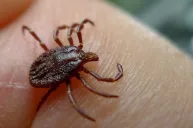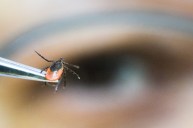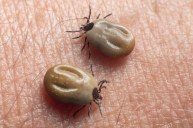A tick-borne disease, which is common in the southern United States, was recently reported in Connecticut, marking its first diagnosis in the northeastern region of the country.
According to the NY Post, the disease in question is primarily found in the South, particularly, Florida. Over the last 80 years though, the disease has slowed spread up the east coast.
The disease in question is Rickettsia parkeri rickettsiosis. The illness is spread through infected mites and tick bites. The disease is similar to Rocky Mountain spotted fever, but with more mild symptoms. Those include headaches, fever, rashes and muscle aches.
The spread of the disease north can likely be attributed to several factors. According to Dr. Goudarz Molaei, who is the director of the Connecticut Agricultural Experiment Station's Passive Tick and Tick-Borne Disease Surveillance Program, rising global temperatures, increased travel and technological changes have all likely played a role in the spread of the disease.
Molaei continued to say that the rising global temperatures allow for ticks to expand their living ranges. As their range expands, so to does the spread of the diseases the critters carry. The result is a growing threat, across the country, to wildlife, pets and humans alike.
First Human Case of Tick-Borne Disease Confirmed in the Northeastern US
Notably, Connecticut itself is not unfamiliar with ticks and the diseases they carry. Lyme Disease is named for the Connecticut town it was first identified in years ago.
In reference to the R. parkeri rickettsiosis itself, the disease is spread by the Gulf Coast Tick. The Gulf Coast Tick was first identified in Connecticut in 2021. At the time, 30% of the species were known to carry the disease in question. In the years that have passed, the ticks have spread into New York and New Jersey, and those populations carry even higher infection rates than the original batch in 2021.
Tick-borne diseases are really not much fun to deal with. Moreover, mosquito-borne diseases are known to trouble the northeast as well. With plenty of water in the region, mosquitoes thrive in the area. Likewise, now that ticks have settled in, they will likely begin to cause more and more trouble as years pass.




